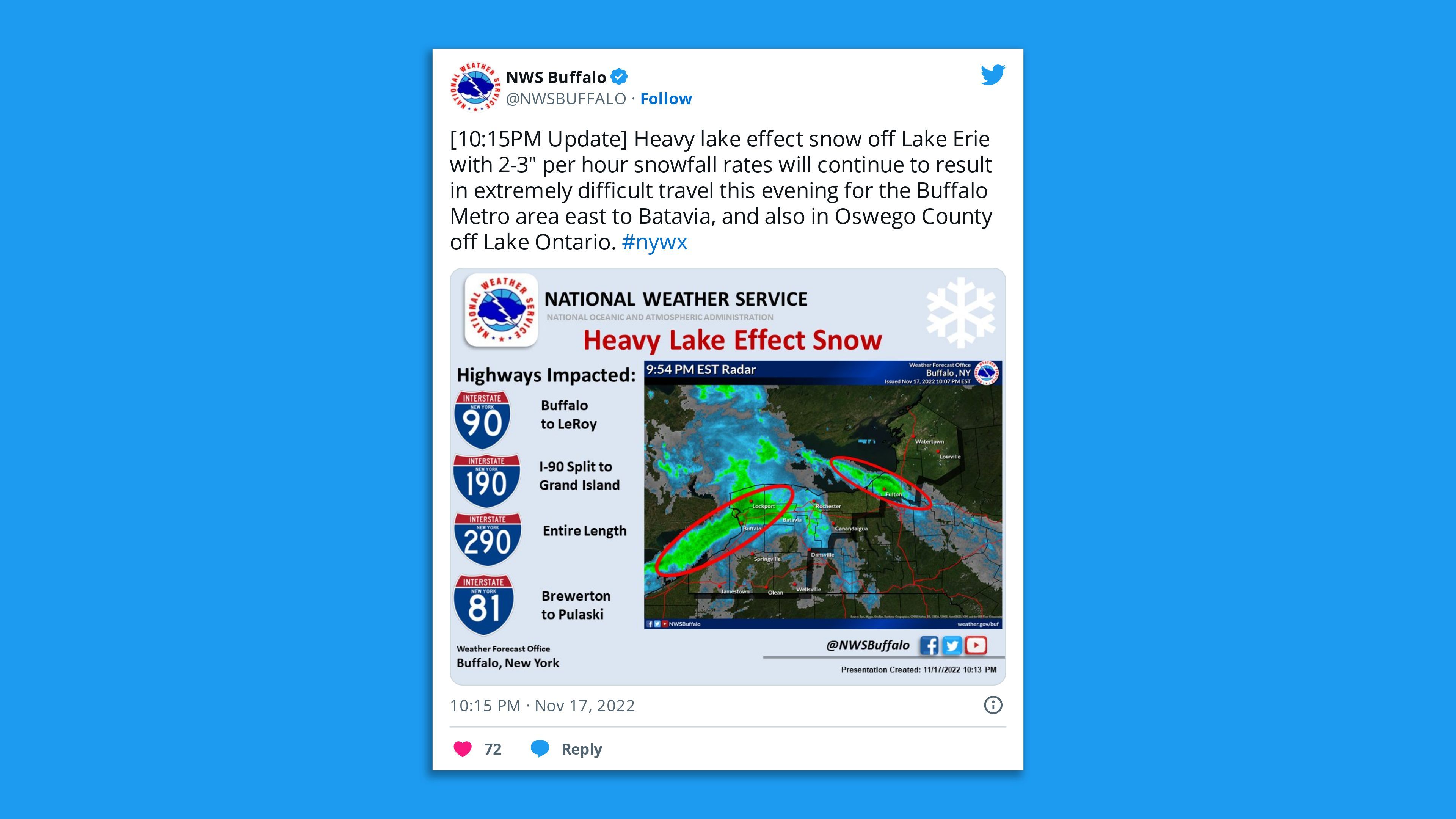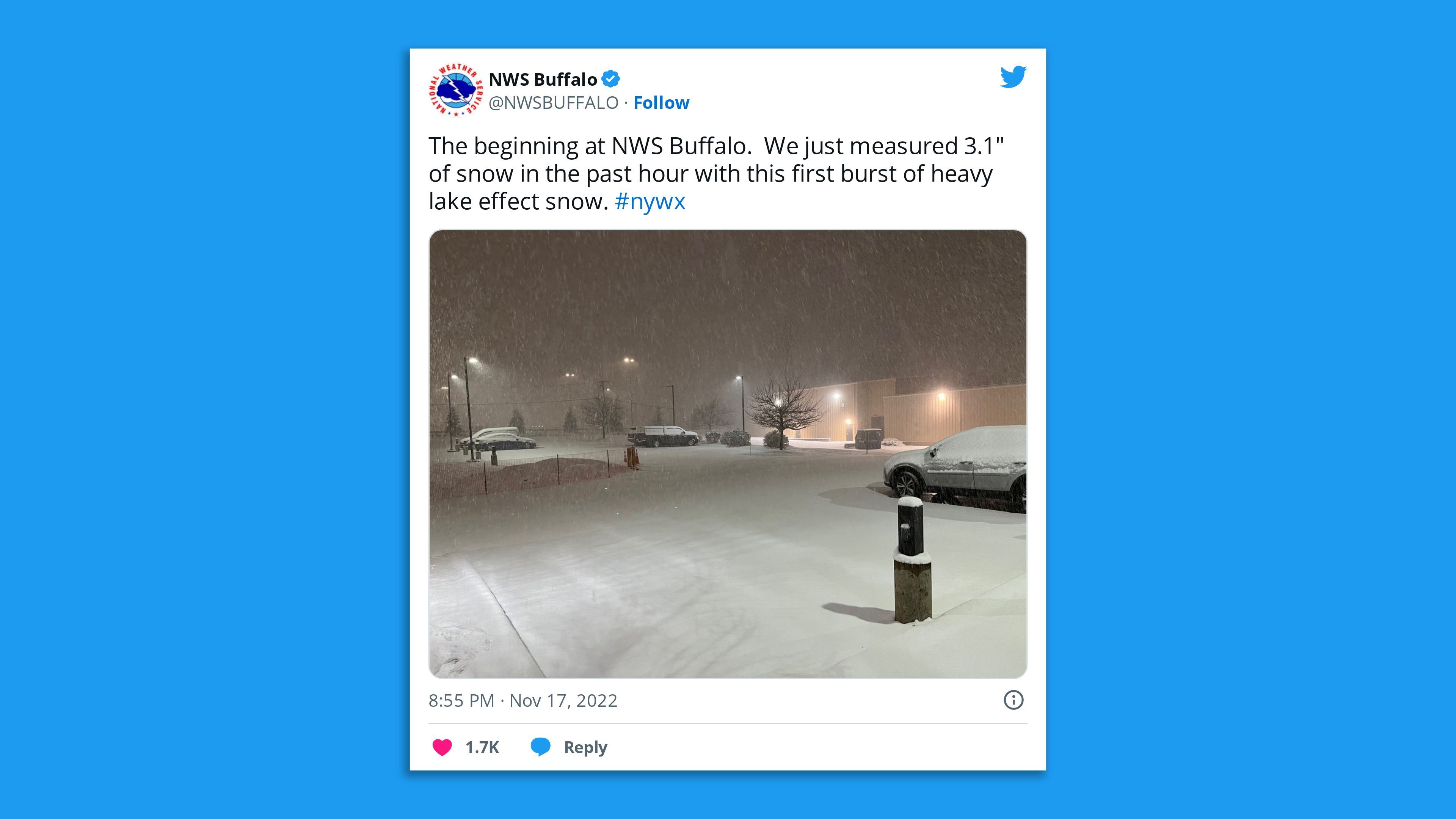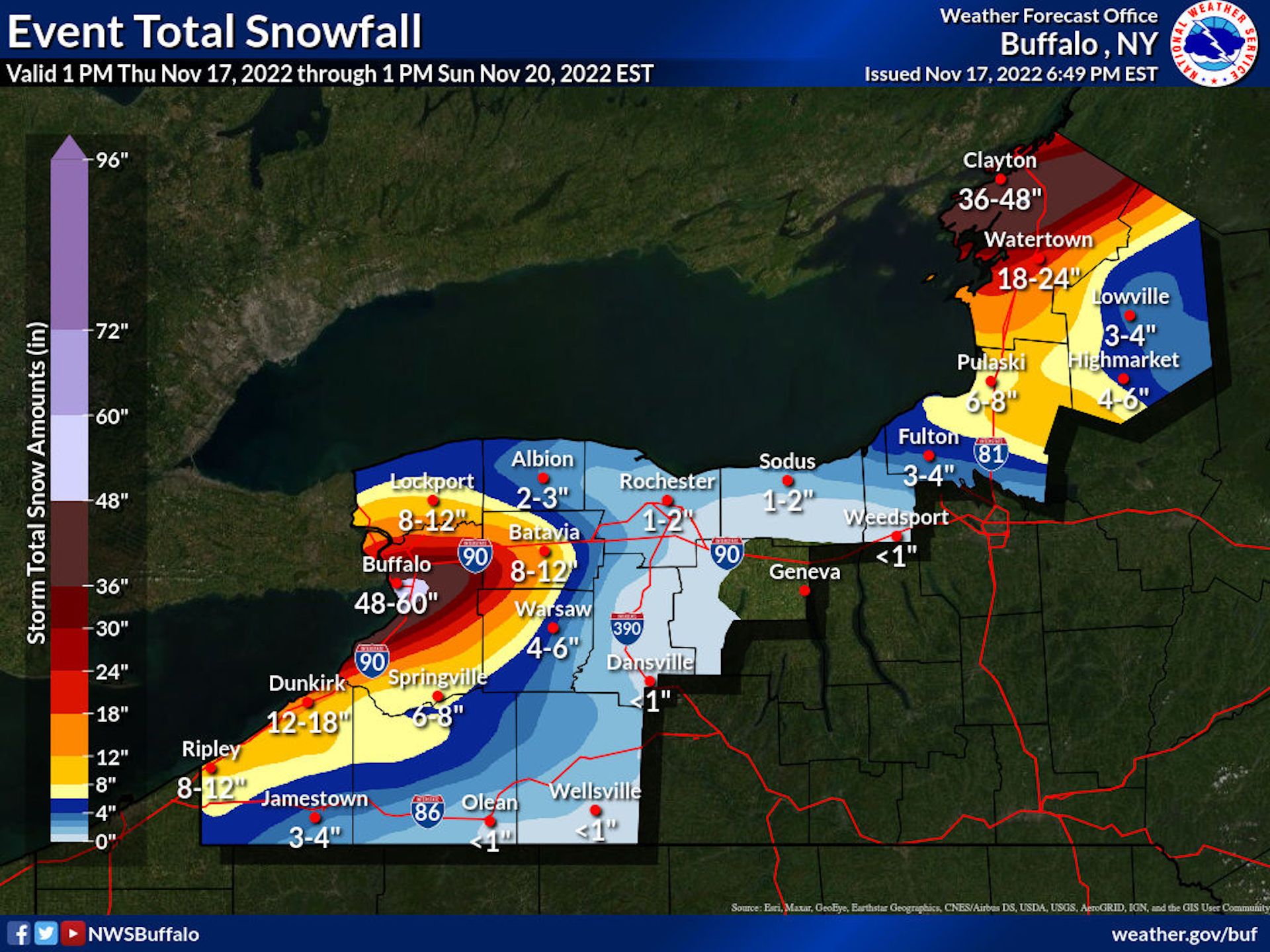A rare weather pattern is causing pre-Thanksgiving frigid air to dive southward from Canada and across the lower 48 states, setting up a "crippling" lake effect snowstorm in the Buffalo, New York, area.
The big picture: An anomalously strong ridge of high pressure parked over Alaska is causing the jet stream to buckle, opening the refrigerator door from the Arctic.

- Such record-strong high-pressure ridges have been observed with greater frequency as the planet warms overall, paradoxically leading to cold weather outbreaks in some cases.
- Temperatures are running between 10 and 20°F below average across the Midwest, Plains, Mid-Atlantic and Northeast.
Threat level: With strong winds blowing across the Great Lakes, an extreme lake effect snow event is now underway. Bands of snow with accumulations of more than three inches per hour downwind of Lake Erie in particular were expected to continue through Sunday.
- The snowfall is expected to be "crippling," the National Weather Service warns, with many areas seeing three feet or more. This is likely to include Buffalo. Peak amounts could exceed four or even five feet, the NWS predicts.

The latest: About a foot of snow had already fallen in Buffalo early Friday. Some areas in or just south of the city were up to 54 inches as of early Friday afternoon, the NWS noted in an update.
- As the snow got under way Thursday night, the NWS warned that the intense, narrow snow bands would "produce near-zero visibility, nearly impossible travel, damage to infrastructure, and paralyze the hardest-hit communities."
- With cold air blowing from southwest to northeast across the comparably mild, unfrozen lake waters, the atmosphere has become unstable. That's led to instances of thundersnow, which were reported across the Buffalo region throughout the night.
What we're watching: The snowfall from this event could break the daily snowfall record for Friday, which is 8.2 inches.
- The storm could also trump the highest November daily snowfall record, which occurred in November 2000, and could add up to 24.9 inches to the record, the NWS stated in an online forecast discussion.

- This snowstorm is likely to rank among Buffalo's top 10 such events on record.
State of play: New York Gov. Kathy Hochul declared a state of emergency on Thursday for the Buffalo and Watertown areas due to the coming snow, with the closure of a nearly 200-mile stretch of the New York State Thruway.
- In Erie County, where Buffalo is located, officials issued a driving ban for all except those authorized for emergency travel, effective 9pm Thursday until at least Friday morning.
- The NFL moved the Buffalo Bills' scheduled home game against the Cleveland Browns to Detroit.
Cold pummels other states
By the numbers: In Montana, Wyoming, Nebraska and parts of Colorado, temperatures were running close to 40°F below average for this time of year on Thursday. Nearly the entire country was colder than average on Thursday, with January-like weather invading the Mid-Atlantic and Northeast.
- A total of 238 million Americans saw temperatures at or below 32°F on Thursday morning, according to the NWS.
Meanwhile, dozens of cold weather records are likely to be set from the Rockies to the Plains and Midwest, on to the Mid-Atlantic and Northeast by the end of the coming weekend.
Context: Cold weather outbreaks such as this one are becoming less intense and frequent as the climate warms due to human emissions of greenhouse gases. However, they will still occur in a warmer world, studies show.
- Overall, the planet has warmed by about 1.2°C (2.16°F) since the preindustrial era, with many areas of the country seeing more significant average temperature increases during the period.
- Despite the chill being felt right now, winter is actually the fastest-warming season in much of the lower 48 states.
Editor's note: This story has been updated with the latest forecast information.







